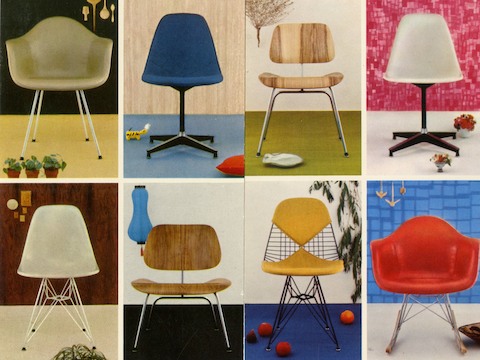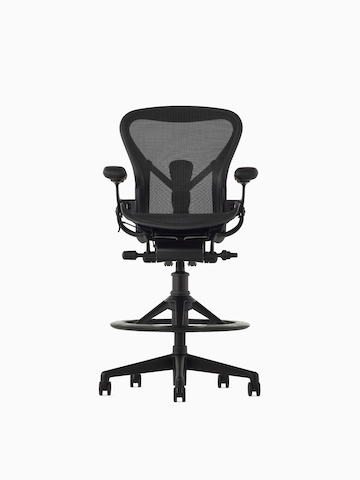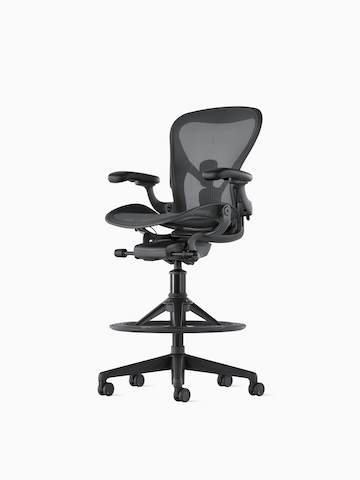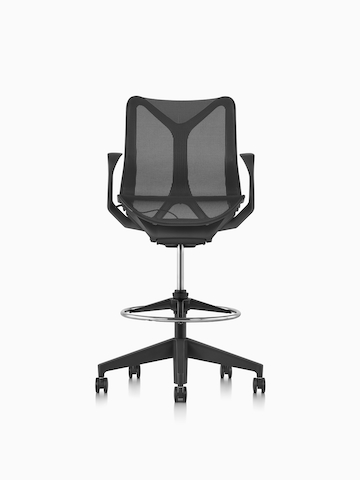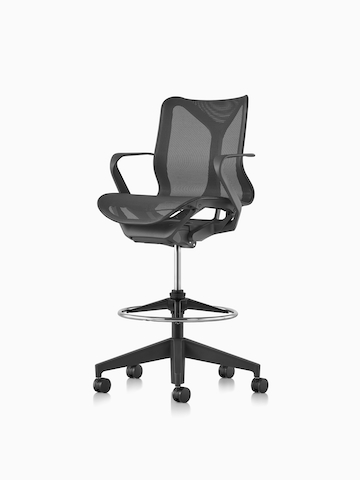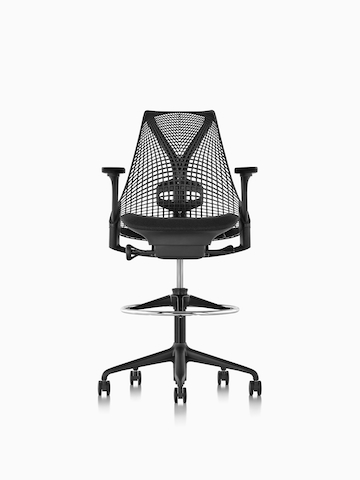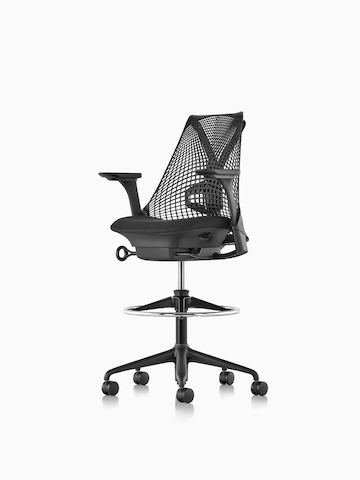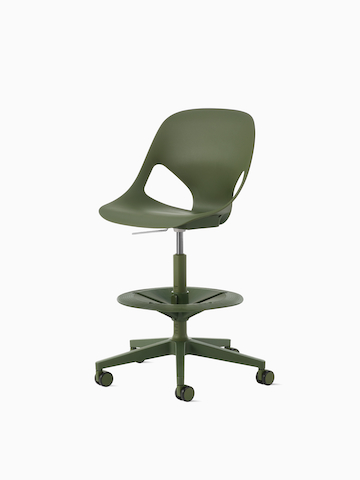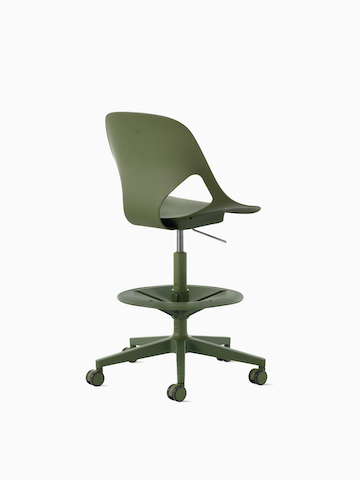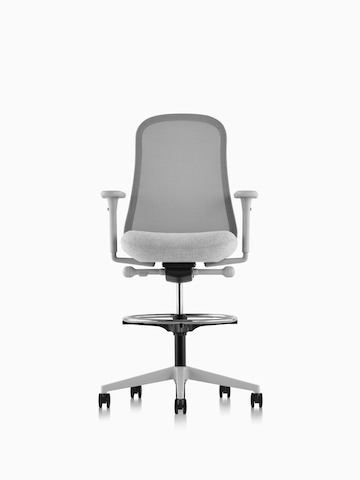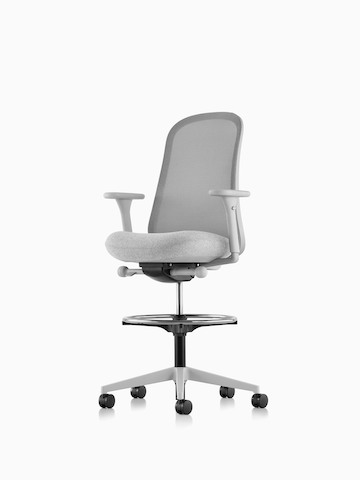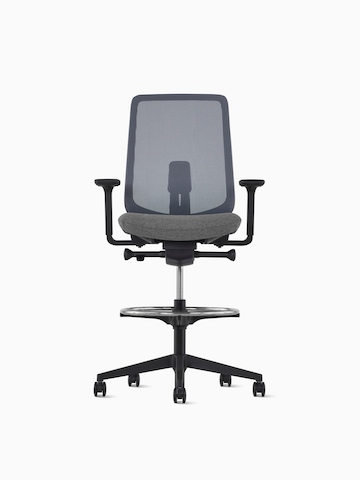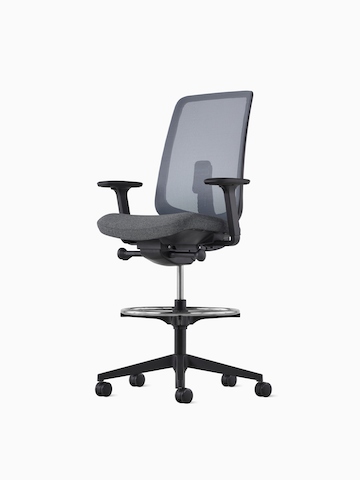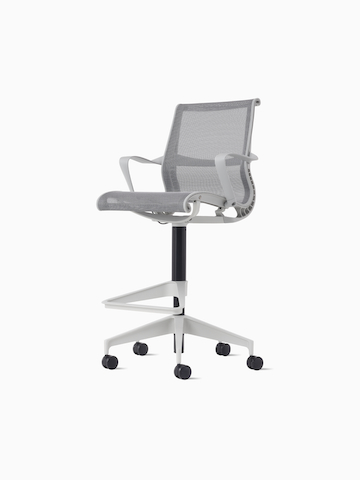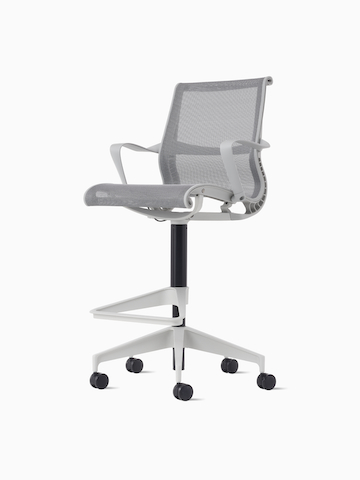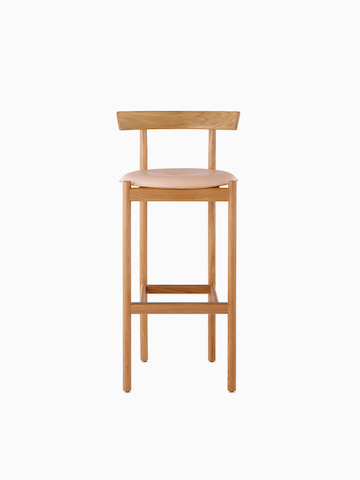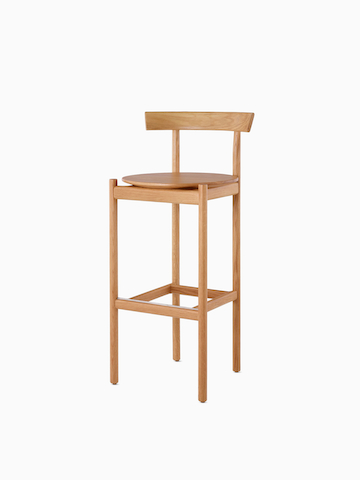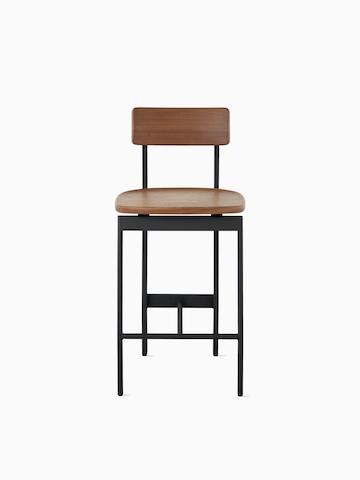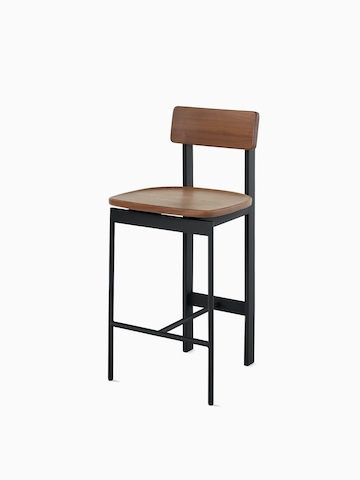
Eames Wire Stool
During a career of endless experimentation and exploration, Charles and Ray Eames continually revisited and refined their ideas. Perhaps the best example of this process is their design for a single-shell chair. Numerous iterations of the Eames Shell Chairs have been realized, leveraging the materials and processes that were both intriguing and available to Charles and Ray at any particular time.
It’s in that spirit that the Eames Wire Chair, itself a result of experiments with bent and welded wire during the 1950s, has been introduced as a stool. A light, airy form, the Eames Wire Stool is available in a choice of finishes, bar- or counter-heights, and with optional seat pad or two-piece leather “bikini” pad.

For every need
Charles Eames famously said, “The role of the designer is that of a very good, thoughtful host anticipating the needs of his guests.” With the molded plastic, fiberglass, and wood shell chairs—as well as the wire chair—the Eameses have created a universal response to what everyone wants from a chair: a simple, gracious form that fits any body and every place.
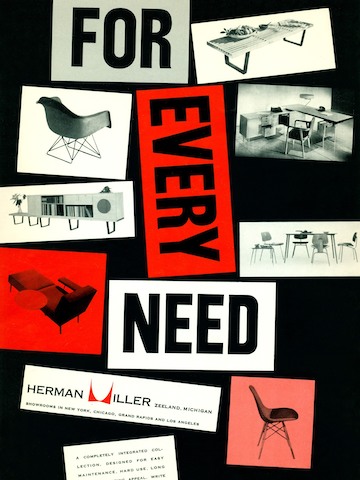

In every way
Borne out of Charles Eames and Eero Saarinen’s early investigations molding plywood at Cranbrook Academy in 1939, and continued with Ray at the Eames studio in Venice, California, the molded chair is exemplary of the Eameses’ iterative process and their desire to make “the best for the most for the least.” With each new form, finish, and configuration, the Eameses continued to push the boundaries of what the shell chair could be. After experimenting with single-form plywood and stamped metal, they turned to fiberglass and experimented with bent wire. When fiberglass production proved unhealthy for the environment, the decision was made to switch production to a safer plastic. Now, with advancements in safe fiberglass composition, dynamic veneer technologies, and sustainable materials, the evolution continues with the Molded Fiberglass, Molded Wood, and Molded Plastic Chairs.
For everyone
The Eames Shell Chair was designed on the principle of adaptability, offering innumerable configurations to serve a wide variety of applications and environments. It’s what makes the chair a classic worthy of museum collections—and living rooms, laundromats, lobbies, and cafés. It’s what makes it a great first piece of furniture to buy in your twenties, that’s still worthy and relevant enough to hand down to your children 20 years later. A diverse selection of shell, base, color, and finish options enable you to create your perfect chair. Just like every person, every chair has a story.
